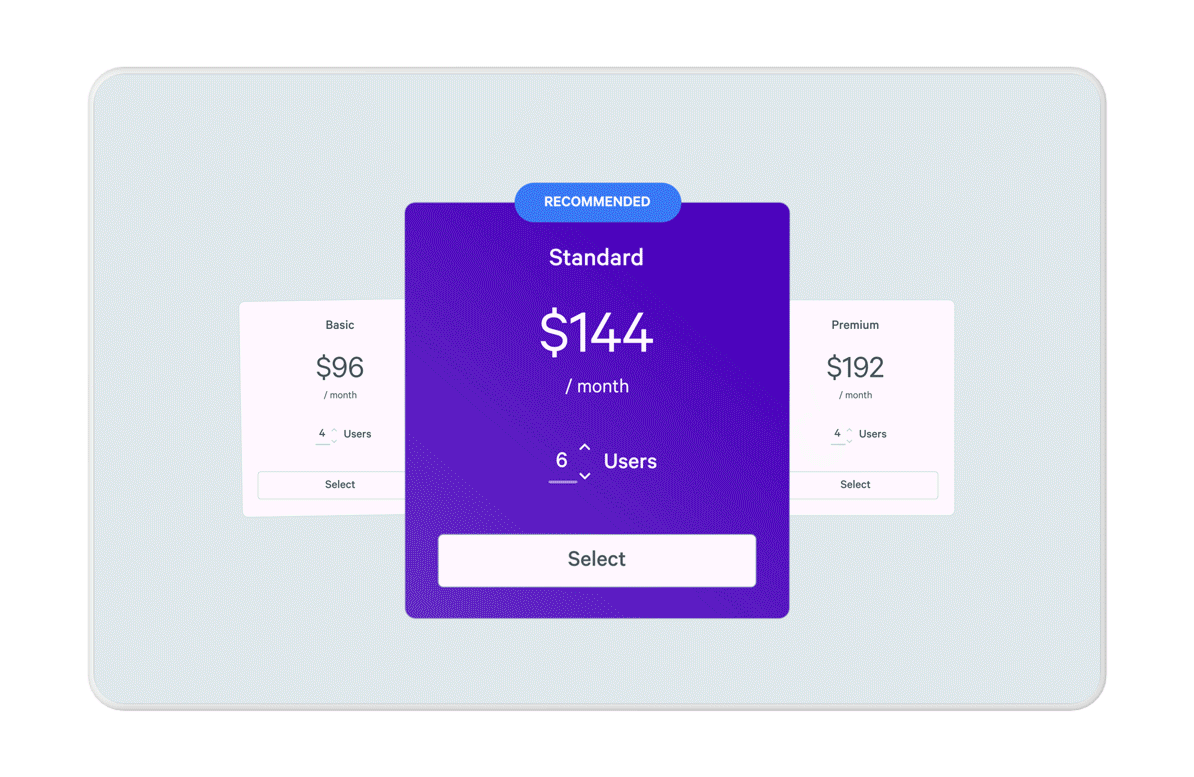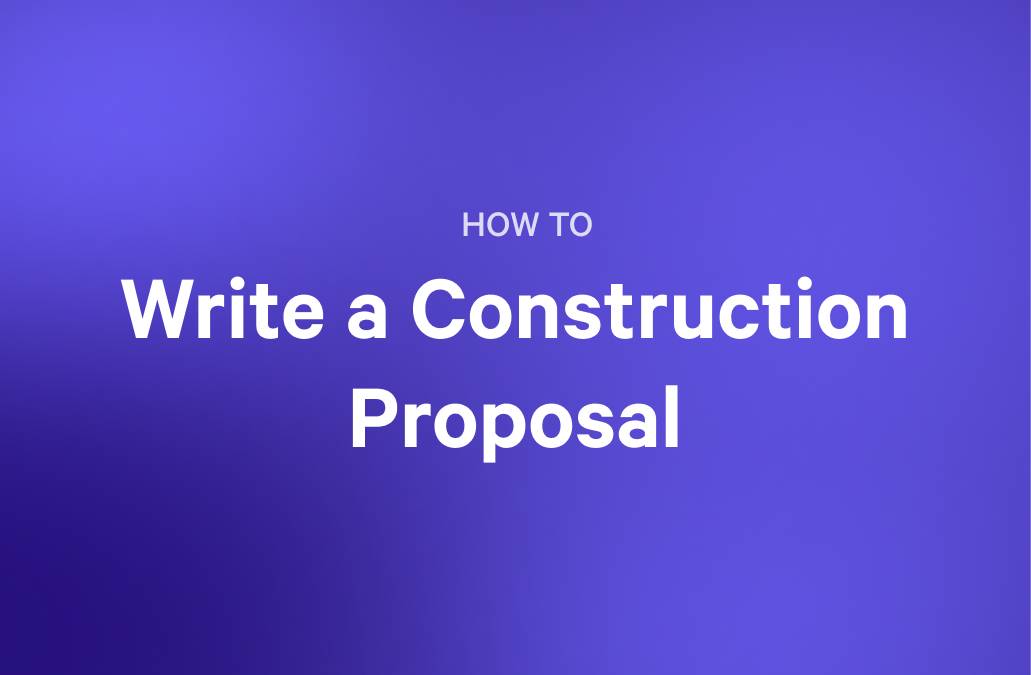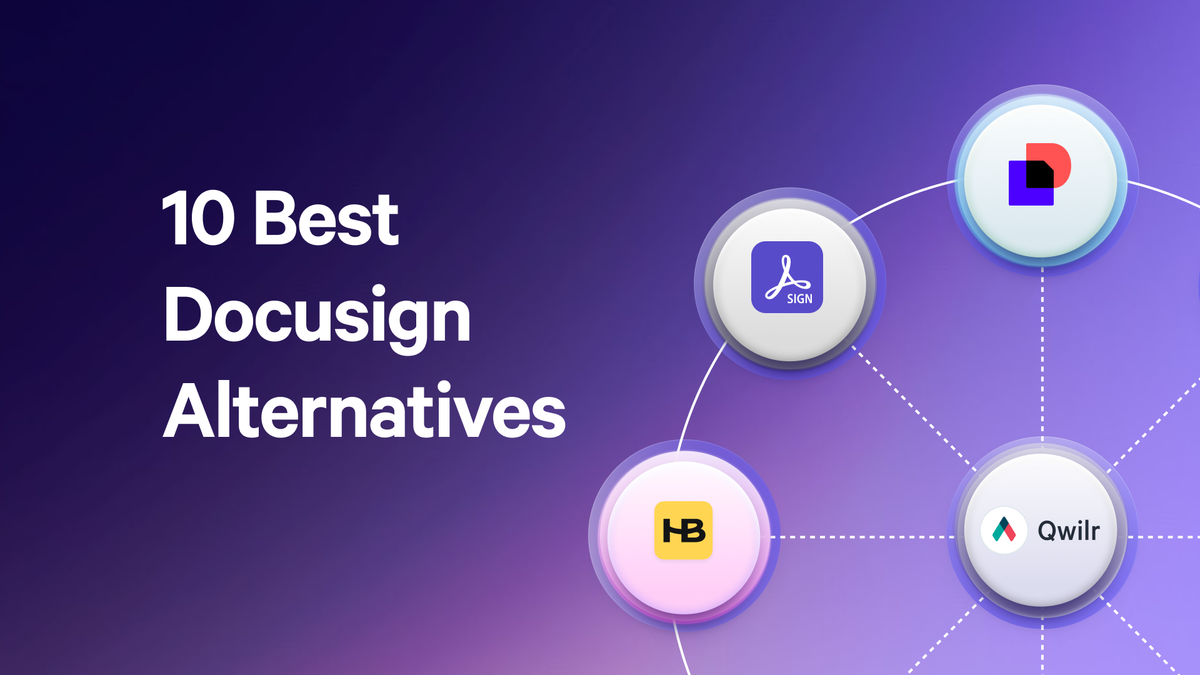So, you’re a sales professional. Or an entrepreneur. Or maybe you’re in business development. What matters is you have a brilliant idea but need to get others on board. That’s where a project proposal comes in: You’ve got a vision and need to show off your genius plan.
Whether it’s convincing your boss, wooing investors, or rallying your team, a great proposal gives you the green light.
In this article, we’ll break down the basics and share tips to help your proposal stand out.
Key takeaways
- A project proposal outlines goals, strategies, and outcomes to secure stakeholder support by addressing key problems and solutions.
- It’s important to know the difference between project proposals, charters, and plans. Proposals pitch ideas, charters formalize approved projects, and plans outline execution steps.
- Adapting your proposal type (e.g., solicited, internal) and aligning it with your audience’s goals is crucial for writing a winning proposal.
- Include a strong structure with key sections like summary, background, solution, budget, and timeline.
- Support your proposal with evidence by using visuals, data, and testimonials to strengthen credibility and secure approval.
What is a project proposal?
A project proposal is a detailed document that outlines the goals, strategies, and expected outcomes of a planned initiative. It is essential for securing support or funding, whether for a business project or a community initiative. By clearly defining the problem, proposed actions, and desired results, the proposal provides a structured plan for stakeholders to evaluate.
These proposals play a key role in helping decision-makers choose wisely by relying on facts and clear analysis. They also enable potential clients to weigh their options, comparing costs, approaches, and expected results across different vendors to find the most suitable partner.
Project proposal vs project charter
Let’s take it a little further. A project proposal and a project charter may seem like siblings in the project management family, but they play very different roles. Think of the project proposal as the spark that ignites the flame—a finely tuned pitch designed to showcase the goals, strategies, and potential outcomes of an idea. Its primary mission is to persuade decision-makers to secure approval or funding. And boy, when the competition is flaring, the persuasion game needs to be on point.
On the other hand, a project charter is the anchor that steadies the ship after the initial excitement. Once the proposal is approved, the charter formalizes the project, outlining the scope, stakeholders, and high-level milestones. It’s the compass that sets the direction for the journey ahead once the ship has (successfully) sailed.
Timing and audience also differ. A project proposal is like a loudspeaker for your vision, designed to capture the attention of sponsors, stakeholders, or clients early in the ideation stage. The project charter formalizes the next steps, and is more of a captain’s log, documenting the path forward for internal teams and executives once the project is officially underway.
Project proposal vs project plan
The project proposal and project plan are like two sides of the same coin - interconnected but serving different purposes. Since a project proposal gives a big-picture overview, a project plan ensures everything unfolds seamlessly. It provides a detailed breakdown of tasks, timelines, resources, and risks, transforming abstract ideas into actionable steps.
The level of detail and intended audience also distinguish the two. A proposal is more conceptual and aimed at decision-makers like sponsors or clients who need to understand the big picture. A project plan, on the other hand, is tailored to project teams and managers responsible for execution.
Types of project proposals
Project proposals come in various forms, each tailored to specific circumstances and audiences. Understanding the different types can help you choose the best approach for your project, ensuring your proposal hits the mark like an arrow finding its target.
- Solicited proposals: These are created in response to a formal request from a client or organization, often with clear guidelines and requirements. They aim to address specific needs identified by the requester and follow a structured format (Think of them as expertly designed answers to a question that’s already been asked!)
- Unsolicited proposals: These are proactive proposals submitted without a prior request from the recipient. They introduce new ideas or solutions to potential clients, hoping to spark interest and open doors. (It’s like presenting an unexpected gift, hoping it’s exactly what they didn’t know they needed.)
- Internal proposals: Keeping it close to home. Prepared within an organization, these proposals are the little nudge that aims to secure approval for new projects or improvements. They are typically addressed to management, focusing on internal goals and benefits.
- External proposals: Submitted to clients or partners outside the organization, these proposals aim to secure contracts, funding, or partnerships. They are tailored to the needs and priorities of the external party. This is an open invitation to collaborate on a shared vision.
- Pre-proposals: Intrigue, hook, spark interest. These are short, preliminary documents that outline the basics of a project idea. They help gauge interest and get feedback before a full proposal is created. (Testing the waters before diving in!)
- Formally solicited proposals: These polished proposals are written in response to an RFP (Request for Proposal) or other structured requests. They must follow strict guidelines and often face significant competition - a proposal that requires maximum effort. This is the structured, no-nonsense approach to winning a project.
- Informally solicited proposals: These arise from casual discussions at a dinner party, or general interest expressed by a client. They are less rigid in structure but still tailored to the client's needs. It’s a conversational start to what could become a formal partnership. Though less formal, they still pack a professional punch when it matters.
- Continuation proposals: Got to keep the wheels turning! Used to request ongoing support for a project already underway, these proposals highlight progress and justify why additional resources are needed.
- Renewal proposals: These focus on extending an existing agreement or funding. They outline what’s been achieved so far and propose terms for the next phase. It’s about showing why the journey together should continue. (Got to renew the vows in the partnership!)
- Competitive proposals: Submitted in situations where multiple organizations vie for the same opportunity. They must stand out by showcasing unique strengths and a superior approach. It’s the standout performance needed to win in a high-stakes contest, the bold and compelling show-stopper.
Project proposal outline: What to include
Using a top proposal management software is your gateway to securing approval and turning your vision into reality. Whether you're presenting a groundbreaking business idea or a community-driven initiative, knowing what to include is vital for success. But how do you structure this essential document to ensure it wins over stakeholders?
- Executive summary: The executive summary is a high-level overview of the proposal where you spotlight the problem, your visionary solution, and the impact it will create. Keep it under one page! Use bullet points for key highlights, and make sure anyone skimming it can grasp the essentials in 30 seconds. Avoid jargon here - clarity wins hearts.
- Project background: The project background provides context by outlining the problem or opportunity (which you’re tackling). Use numbers and trends, but don’t be afraid to spice it up with a narrative that connects the dots. Support your points with data - include stats, case studies, or a concise competitor analysis. Aim to balance storytelling with credibility by making the problem feel both relatable and urgent!
- Your solution: This section explains your proposed solution and why it’s the best fit. This is your “ta-da!” moment. Present your idea as the brilliant answer to the problem, making it clear why nothing else will do (and just how practical it is). Use a “problem-solution-benefit” structure for clarity. So for every feature you mention, connect it to a direct benefit. Include visuals like diagrams or mock-ups to make it pretty to the eye!
- Approach: The approach outlines your plan of action and key milestones. Lay out your step-by-step plan complete with milestones and key phases. Be methodical but show a little flair—your approach should feel meticulous yet distinctive. You also want to break it into phases and give each phase a name (e.g., “Discovery,” “Execution”). Use timelines or flowcharts to keep it digestible. Top tip: Clearly define responsibilities - if it’s unclear who’s doing what, the plan might seem chaotic.
- Risk assessment: This section identifies potential risks and how you’ll handle them. Let’s face it - every plan has a few lurking shadows. Address them head-on by identifying risks and your strategies for keeping them in check. Use a table format with columns for risks, likelihood, impact, and mitigation strategies. Show confidence by demonstrating how you’ll minimize challenges before they escalate.
- Deliverables and goals: Deliverables and goals clarify what will be achieved and produced. Spell out what you’ll deliver and what winning looks like. Be specific, but add a sprinkle of excitement (this is what they’re paying for after all). For deliverables, list each item and connect it to a milestone. For example, “Deliverable: User Training Manual (Phase 3).” And one non-negotiable: Use SMART goals - specific, measurable, achievable, relevant, and time-bound.
- Metrics for success: This section defines how you’ll measure the project’s success in ways that matter. Whether it’s profit, clicks, or kudos from the CEO, make your metrics tangible and relevant. It’s a great idea to align metrics with client priorities (e.g., “20% increase in user retention within 3 months”). Include both quantitative metrics (numbers) and qualitative ones (feedback or satisfaction).
- Resource requirements: Resource requirements outline the people, tools, and materials needed for the project. Explain what you need (people, tools, coffee?!) so your plan can leap from paper to reality. Show you’ve thought it all through, right down to the duct tape and snacks. You might even create categories (e.g., personnel, software, hardware) to make your list clear.
- Budget: The budget breaks down costs and demonstrates financial transparency. Break down your costs like a chef sharing a recipe - exact, transparent, and with no secret ingredients. Use a table to categorize costs (e.g., personnel, materials, overhead). Provide a clear total and, if possible, offer cost-saving alternatives. For example, “Option B saves 10% by scaling back feature Y.”
- Timeline: The timeline maps out the project’s schedule and key deadlines. Outline a timeline that’s realistic but makes them feel like things will get done at lightning speed. Highlight key milestones - every good story needs a few plot twists along the way. Use Gantt charts or a simple timeline graphic for visual clarity. And include buffer times to account for unforeseen delays!
Tips for writing a project proposal
You’ve asked the right probing questions, built a solid foundation of trust, and won your client’s confidence in your proposal (Booyah!)
Now, it’s time to seal the deal with a project proposal that leaves both sides excited about the partnership, aligned on the goals, and clear on the expectations. Follow these tips to create a proposal that not only informs but inspires.
Research your audience
What’s the point of a brilliant solution if it doesn’t resonate with the people making decisions? Tailor your proposal to match your audience’s needs, priorities, and technical expertise. Avoid jargon if your audience isn’t familiar with it, and highlight aspects that directly align with their goals.
If you really wanted to be an overachiever, you could talk to stakeholders or review past proposals to understand their expectations and project requirements.
Clearly define objectives
This is a clear-cut way to avoid any challenges and problems arising. Would you board a ship without knowing its destination? Neither will your stakeholders! Define your objectives to chart the course.
State your goals in simple, measurable terms that leave no room for ambiguity. Think of your objectives as the North Star guiding your project - clear, consistent, and impossible to miss. What exactly are you trying to achieve, and how will success be measured? Clear objectives help decision-makers see the endgame and get on board.
Remember, you want to use SMART goals. Don’t just say, “Increase sales”; instead, say, “Boost sales by 20% within six months through targeted digital campaigns.” Provide examples of what success looks like to illustrate your point with rich detail.
Itemize the budget
Break down your budget into clear, detailed categories, so every penny has a purpose. Think of it as peeling back the layers of an onion - each line item reveals where resources will go and why they’re necessary. A well-structured budget not only shows financial transparency but also proves you’ve thought through every aspect of the project.
Include expenses like personnel, materials, technology, and overhead, and explain how each contributes to achieving the goals. This is your chance to balance ambition with practicality, ensuring your project looks feasible without skimping on quality.
You definitely want to consider offering alternative budget tiers (basic, moderate, and premium) so stakeholders can see the impact of additional investment. And justify any big-ticket items, linking them to measurable outcomes or risks they’ll mitigate!

Check out our video below for a practical walkthrough on creating successful business proposals:
Introduce your team and qualifications
This is the part that you do, not only to seal the deal but because you’re hopefully genuinely stoked to introduce your efficient team. Showcase the key players behind your project. Wouldn’t you feel more confident investing in a team with proven experience and expertise?
Highlight their skills, past successes, and what makes them uniquely suited for the job. Add concise yet captivating bios or a vibrant visual org chart for crystal-clear clarity. Showcase noteworthy achievements and compelling certifications that amplify your credibility and make your team masters of their craft.
Proof your work
A process that often falls through the cracks!
Every detail matters. Typos and errors can tarnish even the most brilliant proposal. Enlist a second pair of eyes, whether it’s a colleague, mentor, or professional editor, to comb through your work for mistakes. If that’s not possible, step away for a few hours or overnight to let your eyes and mind reset before giving it another thorough review. Meticulously-made proposals speak volumes.
Cite Your Sources
An effective project proposal confidently leans on visuals, statistics, and concrete evidence to support its claims. Whether it’s glowing customer testimonials and case studies, constructive feedback, or insightful user data, ensure your rationale is rooted in facts, not hunches. Solid evidence not only strengthens your case but also builds trust, making approval far more likely. As they say, numbers don’t lie—so let the data do the talking.
Project proposal template
If you’re not sure how to begin, Qwilr’s project proposal template provides the perfect starting point for crafting a professional, client-focused proposal. It’s designed to help you emphasize the most important details—like project goals, timelines, and deliverables—so you can present a clear and compelling plan with ease.
Qwilr’s project proposal template doesn’t just save you time; it also simplifies your workflow, improves collaboration, and ensures your proposals leave a lasting impression. Its sleek, customizable design allows you to easily adapt each proposal to meet your client’s unique needs, while the centralized platform keeps all your information organized and accessible—no more sifting through emails or juggling scattered files.
This template is fully customizable but includes some important fields to get you started:
- Introduction
- Executive Summary
- Client Needs
- Our Solution
- Implementation Plan
- Cost and ROI
- Success Stories and Testimonials
Upgrade your project proposals with Qwilr
Qwilr provides a variety of tailor-made templates that make creating proposals a walk in the park. With its intuitive design, interactive features, and brand customization, it simplifies the entire process.
Dive in with a free trial and discover just how seamless it is to strike a deal.
About the author

Brendan Connaughton|Head of Growth Marketing
Brendan heads up growth marketing and demand generation at Qwilr, overseeing performance marketing, SEO, and lifecycle initiatives. Brendan has been instrumental in developing go-to-market functions for a number of high-growth startups and challenger brands.


